Biography of Mary Queen of Scots 1542-1587
Paternal Family Tree: Stewart
Maternal Family Tree: Tomasina Morosini
1542 Death of King James V of Scotland
1558 Marriage of Mary Queen of Scots and the Francis Dauphin of France
1559 Henry II of France Dies Francis and Mary "Queen of Scots" Succeed
1560 Death of Francis II King France Charles IX Succeeds
1567 Marriage of Mary "Queen of Scots" and Lord Bothwell
1568 Mary Queen of Scots escapes from Lochleven Castle
1568 Mary Queen of Scots escapes to England
1570 James Stewart 1st Earl Moray Assassinated by Firearm
On 09 Sep 1513 at the Battle of Flodden was fought at the Branxton, Northumberland [Map]. the English army was commanded by Thomas Howard 2nd Duke of Norfolk (age 70), Thomas Howard 3rd Duke of Norfolk (age 40), Edmund Howard (age 35), Thomas Dacre 2nd Baron Dacre Gilsland (age 45), Edward Stanley 1st Baron Monteagle (age 51) and Marmaduke Constable (age 56).



The English army included: Henry "Shepherd Lord" Clifford 10th Baron Clifford (age 59), William Conyers 1st Baron Conyers (age 44), Thomas Berkeley 5th Baron Berkeley (age 41) and Richard Neville 2nd Baron Latimer of Snape (age 45).



Randall Babington, John Bigod (age 38) and Thomas Fitzwilliam (age 39) were killed.


Marmaduke Constable (age 33), William Constable (age 38), George Darcy 1st Baron Darcy Aston (age 16), Edmund Walsingham (age 33), Thomas Burgh 7th Baron Cobham 5th Baron Strabolgi 1st Baron Burgh (age 25) and Walter Stonor (age 36) were knighted by Thomas Howard 3rd Duke of Norfolk (age 40).



Christopher Savage, Thomas Venables (age 44) and Brian Tunstall (age 33) were killed.
Bryan Stapleton of Wighill (age 55) was killed. (Some reports have him dying in 1518).
John Booth (age 78) was killed.
Father and son Ralph ellerker of risby in yorkshire and Ralph Ellerker were knighted by Thomas Howard Earl of Surrey (age 70).
The Scottish army suffered heavy casualties:
[her grandfather] King James IV of Scotland (age 40) was killed. His body ws taken to London, then to Sheen Priory, Richmond; thereafter it dissappeared. His son [her father] King James V of Scotland (age 1) succeeded V King Scotland.
[her uncle] Alexander Stewart ArchBishop of St Andrews (age 20) was killed.
David Kennedy 1st Earl Cassilis (age 43) was killed. His son Gilbert Kennedy 2nd Earl Cassilis (age 18) succeeded 2nd Earl Cassilis. Isabel Campbell Countess Cassilis by marriage Countess Cassilis.
William Sinclair 2nd Earl Caithness (age 54) was killed. His son John Sinclair 3rd Earl Caithness succeeded 3rd Earl Caithness.
Matthew Stewart 2nd Earl Lennox was killed. His son John Stewart 3rd Earl Lennox (age 23) succeeded 3rd Earl Lennox.
William Hay 4th Earl Erroll was killed. His son William Hay 5th Earl Erroll (age 18) succeeded 5th Earl Erroll.
John Douglas 2nd Earl Morton was killed. His son James Douglas 3rd Earl Morton succeeded 3rd Earl Morton, 6th Lord Dalkeith.
Adam Hepburn 2nd Earl Bothwell was killed. His son Patrick Hepburn 3rd Earl Bothwell (age 1) succeeded 3rd Earl Bothwell.
Alexander Stewart 4th of Garlies (age 32) was killed. His son Alexander Stewart 5th of Garlies (age 6) succeeded 5th Lord Garlies.
Alexander Elphinstone 1st Lord Elphinstone was killed. His son Alexander Elphinstone 2nd Lord Elphinstone (age 3) succeeded 2nd Lord Elphinstone.
Thomas Hay, George Hepburn Bishop Isles (age 59), Adam Hepburn Master (age 56), Thomas "Younger of Cushnie" Lumsden
William Douglas 6th Lord Drumlanrig was killed. William "Younger" Douglas 7th Lord Drumlanrig succeeded 7th Lord Drumlanrig.
George Seton 5th Lord Seton was killed. His son George Seton 6th Lord Seton succeeded 6th Lord Seton.
John Hay 2nd Lord Hay of Yester was killed. His son John Hay 3rd Lord Hay (age 23) succeeded 3rd Lord Hay of Yester. Elizabeth Douglas Lady Hay by marriage Lord Hay of Yester.

Robert Keith Master of Marischal (age 30), Guiscard Harbottle (age 28), John Erskine, David Home (age 22), Andrew Stewart 1st Lord Avondale (age 43), Archibald Campbell 2nd Earl Argyll (age 64), Robert Douglas of Lochleven (age 89) were killed.
Henry Sinclair 3rd Lord Sinclair (age 48) was killed. His son William Sinclair 4th Lord Sinclair succeeded 4th Lord Sinclair.
James Stewart 1st Lord of Traquair (age 33) was killed. His son William Stewart 2nd Lord Traquair (age 7) succeeded 2nd Lord Traquair.
John Maxwell 4th Lord Maxwell (age 57) was killed. His son Robert Maxwell 5th Lord Maxwell (age 20) succeeded 5th Lord Maxwell.
William Murray (age 43), Colin Oliphant (age 26), William Ruthven (age 33), George Douglas (age 44) and William Douglas (age 42) were killed.

George Home 4th Lord Home and John Stewart 2nd Earl Atholl (age 38) fought.
Brothers David Lyon of Cossins, William Lyon and George Lyon were killed.
William Graham 1st Earl Montrose (age 49) was killed. His son William Graham 2nd Earl Montrose (age 21) succeeded 2nd Earl Montrose.
Robert Erskine 4th Lord Erskine 16th Earl Mar was killed. His son John Erskine 17th Earl Mar (age 26) de jure 17th Earl Mar, Lord Erskine.
Thomas Stewart 2nd Lord Innermeath (age 52) was killed. His son Richard Stewart 3rd Lord Innermeath succeeded 3rd Lord Innermeath.
Walter Lindsay of Arden and Walter Lindsay (age 33) were killed.
William Keith of Inverugie (age 43) was killed.
David Wemyss of Wemyss (age 40) was killed.
John Somerville 1st of Cambusnethan (age 55) was killed.
Robert Crichton 2nd Lord Crichton of Sanquhar (age 41) was killed. His son Robert Crichton 3rd Lord Crichton of Sanquhar (age 22) succeeded 3rd Lord Crichton of Sanquhar
Father and son William Rollo (age 59) and Robert Rollo 5th of Duncrub (age 34) were killed.
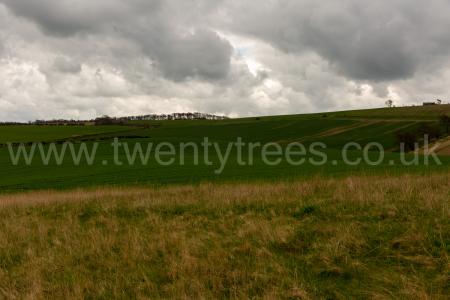
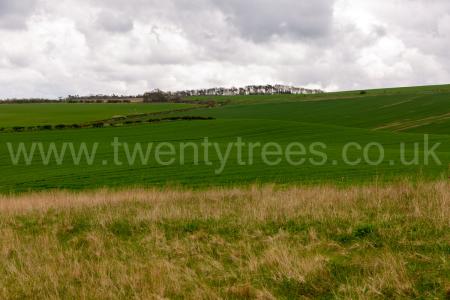
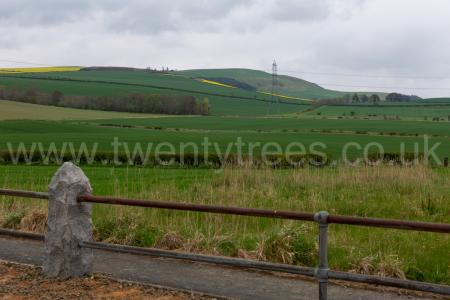
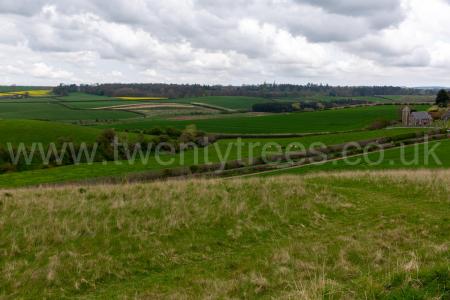
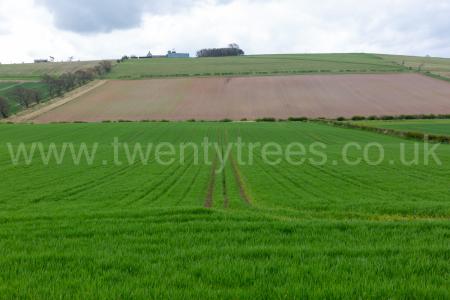
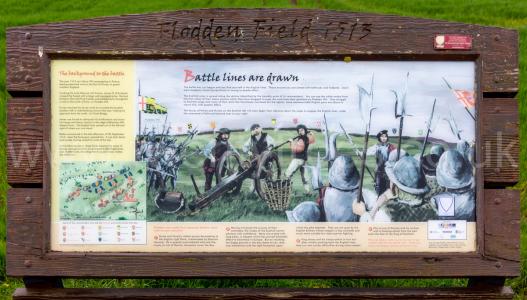
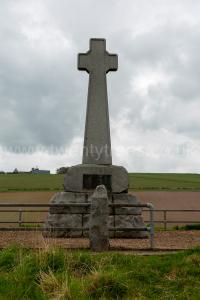
On 04 Aug 1534 Louis Valois II Duke Longueville (age 24) and [her mother] Mary of Guise Queen Consort Scotland (age 18) were married. She by marriage Duchess Longueville. She the daughter of Claude Lorraine 1st Duke Guise (age 37) and Antoinette Bourbon Duchess of Guise (age 41). He the son of Louis Valois I Duke Longueville and Johanna Hochberg Duchess Longueville.
On 01 Jan 1537 [her father] King James V of Scotland (age 24) and Madeleine Valois (age 16) were married at Notre Dame de Paris Cathedral [Map]. She the daughter of King Francis I of France (age 42) and Claude Valois Orléans Queen Consort France. He the son of King James IV of Scotland and Margaret Tudor Queen Scotland (age 47). They were third cousin once removed. He a grandson of King Henry VII of England and Ireland. 


On 18 Jun 1538 [her father] King James V of Scotland (age 26) and [her mother] Mary of Guise Queen Consort Scotland (age 22) were married at St Andrew's Cathedral Priory, St Andrew's. She by marriage Queen Consort Scotland. She the daughter of Claude Lorraine 1st Duke Guise (age 41) and Antoinette Bourbon Duchess of Guise (age 45). He the son of King James IV of Scotland and Margaret Tudor Queen Scotland (age 48). They were third cousins. He a grandson of King Henry VII of England and Ireland. 


On 25 Nov 1542 Thomas Wharton 1st Baron Wharton (age 47) commanded the English forces at Battle of Solway Moss at Solway Moss, Cumberland [Map]. John Thynne (age 27) fought. Of the Scottish army Malcolm Fleming 3rd Lord Fleming (age 48), Gilbert Kennedy 3rd Earl Cassilis (age 27) and Laurence Oliphant 3rd Lord Oliphant fought.
William Graham 3rd Earl Menteith (age 42) was captured. He was ransomed in 1453.
William Cunningham 4th Earl Glencairn (age 49) was captured and committed to the custody of Thomas Howard 3rd Duke of Norfolk (age 69). He was released on payment of a ransom of a thousand pounds and subscribing by his own hand to support Henry VIII's (age 51) project of a marriage between the young King Edward VI of England and Ireland (age 5) and the Mary Queen of Scots.


Malcolm Fleming 3rd Lord Fleming (age 48) was captured.
On 08 Dec 1542 Mary Queen of Scots was born to King James V of Scotland (age 30) and Mary of Guise Queen Consort Scotland (age 27) at Linlithgow Palace, Linlithgow. She a great granddaughter of King Henry VII of England and Ireland.
On 14 Dec 1542 [her father] King James V of Scotland (age 30) died at Falkland Palace [Map]. His daughter Mary Queen of Scots succeeded I Queen Scotland. She was six days old.
Around Sep 1543 James Hamilton 2nd Earl Arran (age 27) was created 1st Duke Châtellerault. Margaret Douglas Duchess Châtellerault by marriage Duchess Châtellerault. He was awrded the Duchy for having arranged the marriage of Mary Queen of Scots and the Dauphin.
On 09 Sep 1543 Mary Queen of Scots was crowned I King Scotland.
In Jun 1548 a French army took the town of Haddington from the English.
On 07 Jul 1548 a Scottish Parliament held at a nunnery near the town of Haddington agreed to marry Mary Queen of Scots (age 5) to the [her future husband] Dauphin of France (age 4).

In Aug 1548 James Hamilton 3rd Earl Arran (age 16) travelled to with Mary Queen of Scots (age 5) at France.
In 1556 Sébastien de Luxembourg Duke of Penthièvre (age 26) and Marie de Beaucaire (age 21) were married. She a Lady in Waiting to Mary Queen of Scots (age 13).
In Sep 1556 Patrick Hepburn 3rd Earl Bothwell (age 44) died. His son [her future husband] James "Lord Bothwell" Hepburn 1st Duke Orkney (age 22) succeeded 4th Earl Bothwell.
In 1557 Francis Montmorency (age 26) and [her illegitimate sister-in-law] Diane Valois (age 18) were married. She the illegitmate daughter of King Henry II of France (age 37) and Filippa Duci. They were half second cousin once removed.
On 24 Apr 1558 Dauphin of France (age 14) and Mary Queen of Scots (age 15) were married at Notre Dame de Paris Cathedral [Map]. He by marriage King Consort Scotland. She the daughter of King James V of Scotland and Mary of Guise Queen Consort Scotland (age 42). He the son of King Henry II of France (age 39) and Catherine Medici Queen Consort France (age 39). They were fourth cousins. She a great granddaughter of King Henry VII of England and Ireland. 

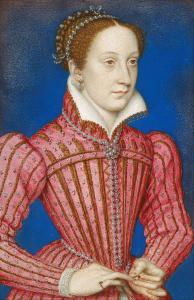 Around 1559 François Clouet (age 49). Portrait of Mary Queen of Scots (age 16).
Around 1559 François Clouet (age 49). Portrait of Mary Queen of Scots (age 16).
On 10 Jul 1559 [her father-in-law] King Henry II of France (age 40) was killed whilst jousting in celebration of his daughter's (age 14) marriage to Philip "The Prudent" II King Spain (age 32). His son [her husband] Francis II King France King Consort Scotland (age 15) succeeded II King France: Capet Valois Angoulême. Mary Queen of Scots (age 16) by marriage Queen Consort France. They would reign for eighteen months only with Francis dying in Dec 1560. Francis and Mary would have no issue.

On 11 Jun 1560 [her mother] Mary of Guise Queen Consort Scotland (age 44) died at Edinburgh Castle [Map].
On 05 Dec 1560 [her husband] Francis II King France King Consort Scotland (age 16) died. His brother [her brother-in-law] Charles IX King France (age 10) succeeded IX King France: Capet Valois Angoulême. Mary Queen of Scots (age 17) no longer Queen of France she returned to Scotland arriving at Leith 19 Aug 1561 after having been in France for thirteen years.

On 22 Jul 1565 [her future husband] Henry "Lord Darnley" Stewart (age 19) was created 1st Duke Albany.
On 29 Jul 1565 Henry "Lord Darnley" Stewart (age 19) and Mary Queen of Scots (age 22) were married at Holyrood Palace, Holyrood. She the daughter of King James V of Scotland and Mary of Guise Queen Consort Scotland. He the son of Matthew Stewart 4th Earl Lennox (age 48) and Margaret Douglas Countess Lennox (age 49). They were half first cousins. He a great grandson of King Henry VII of England and Ireland. She a great granddaughter of King Henry VII of England and Ireland. 


In Feb 1566 [her future husband] James "Lord Bothwell" Hepburn 1st Duke Orkney (age 32) and Jean Gordon Countess Bothwell and Sutherland (age 20) were married. She by marriage Countess Bothwell. She the daughter of George Gordon 4th Earl Huntley. He the son of Patrick Hepburn 3rd Earl Bothwell and Agnes Sinclair Countess Bothwell. They were third cousins. He a great x 5 grandson of King Edward III of England.
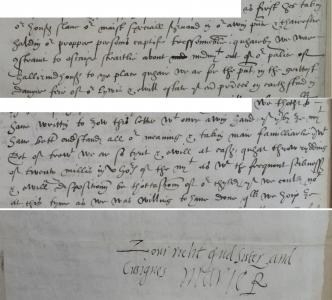 On 09 Mar 1566 at eight o'clock in the evening David Rizzio (age 33) was murdered in the presence of the six months pregnant Mary Queen of Scots (age 23) and her half-sister [her illegitimate half-sister] Jean Stewart Countess Argyll (age 33) at Holyrood Palace [Map] by rebels led by Patrick Ruthven 3rd Lord Ruthven. Rizzio was dragged through the bed chamber into the adjacent Audience Chamber and stabbed an alleged 57 times. Mary's husband [her husband] Henry "Lord Darnley" Stewart (age 20) was suspected of being one of the murderers.
On 09 Mar 1566 at eight o'clock in the evening David Rizzio (age 33) was murdered in the presence of the six months pregnant Mary Queen of Scots (age 23) and her half-sister [her illegitimate half-sister] Jean Stewart Countess Argyll (age 33) at Holyrood Palace [Map] by rebels led by Patrick Ruthven 3rd Lord Ruthven. Rizzio was dragged through the bed chamber into the adjacent Audience Chamber and stabbed an alleged 57 times. Mary's husband [her husband] Henry "Lord Darnley" Stewart (age 20) was suspected of being one of the murderers.

On 15 Mar 1566 Mary Queen of Scots (age 23) writes to Queen Elizabeth I of England and Ireland (age 32):

As first hes takin our houss slane our maist [most] speciall servand (age 33) in our awin [own] presence & thaireftir haldin our propper personis captive tressonneblie, quhairby [whereby] we war constrainit to escaipe straitlie about midnyght out of our palice of halliruidhouss [Map] to the place quhair [where] we ar for the present, in the grittest danger feir of our lywis & ewill [ill] estate that evir princes on earth stuid [stood] in.
We thotht to have writtin to you this letter with oure awin [own] hand, that therby ye myght have better onestand all our meaning & takin mair [more] familliarlie therewit. Bot of trewt [truth] we ar so tyrit [tired] & ewill [ill] at eass [ease], quhat [what] throw rydding of twenty millis [miles] in v [5] horis [hours] of the nyght as wit the frequent seikness & weill dispositioun be th'occasioun of our child/that we could not at this tyme as we was willing to have done…
Your richt [right] gud sister and cusignes [cousin] Marie R.
Jean Stewart Countess Argyll:
Around 1533 she was born illegitimately to King James V of Scotland and Elizabeth Bethune. She a great granddaughter of King Henry VII of England and Ireland.
In 1553 Archibald Campbell 5th Earl Argyll and she were married. She by marriage Countess Argyll. She the illegitmate daughter of King James V of Scotland and Elizabeth Bethune. He the son of Archibald Campbell 4th Earl Argyll and Helen Hamilton Countess Argyll. They were third cousins. She a great granddaughter of King Henry VII of England and Ireland.  On 07 Jan 1588 Jean Stewart Countess Argyll died.
On 07 Jan 1588 Jean Stewart Countess Argyll died.
Patrick Ruthven 3rd Lord Ruthven: he was born to William Ruthven 2nd Lord Ruthven and Janet Halyburton Lady Dirletoun. Before 1551 Patrick Ruthven 3rd Lord Ruthven and Janet Douglas were married. She the illegitmate daughter of Archibald Douglas 6th Earl Angus. After 1551 Patrick Ruthven 3rd Lord Ruthven and Janet Stewart were married. His second marriage, her fourth. She the daughter of John Stewart 2nd Earl Atholl and Janet Campbell Countess Atholl. She a great x 4 granddaughter of King Edward III of England. On 13 May 1566 Patrick Ruthven 3rd Lord Ruthven died.
On 19 Jun 1566 [her son] King James I of England and Ireland and VI of Scotland was born to [her husband] Henry "Lord Darnley" Stewart (age 20) and Mary Queen of Scots (age 23) at Edinburgh Castle [Map]. He a great x 2 grandson of King Henry VII of England and Ireland. Coefficient of inbreeding 3.67%. 

Before 1567 John Sinclair and [her future sister-in-law] Jean Hepburn were married. She the daughter of Patrick Hepburn 3rd Earl Bothwell and Agnes Sinclair Countess Bothwell. He the son of George Sinclair 4th Earl Caithness and Elizabeth Graham Countess Caithness (age 46). They were half third cousins. She a great x 5 granddaughter of King Edward III of England. 
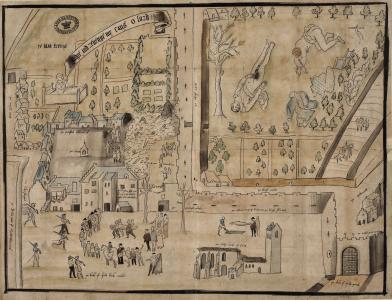 On 10 Feb 1567 [her husband] Henry "Lord Darnley" Stewart (age 21) was murdered at Kirk O Field. Around two in the morning two barrels of gunpowder exploded beneath his room. His body and that of his valet William Taylor were found outside, surrounded by a cloak, a dagger, a chair, and a coat. Darnley was dressed only in his nightshirt. There were no visible marks on the body. He was buried at Holyrood Abbey, Holyrood.
On 10 Feb 1567 [her husband] Henry "Lord Darnley" Stewart (age 21) was murdered at Kirk O Field. Around two in the morning two barrels of gunpowder exploded beneath his room. His body and that of his valet William Taylor were found outside, surrounded by a cloak, a dagger, a chair, and a coat. Darnley was dressed only in his nightshirt. There were no visible marks on the body. He was buried at Holyrood Abbey, Holyrood.
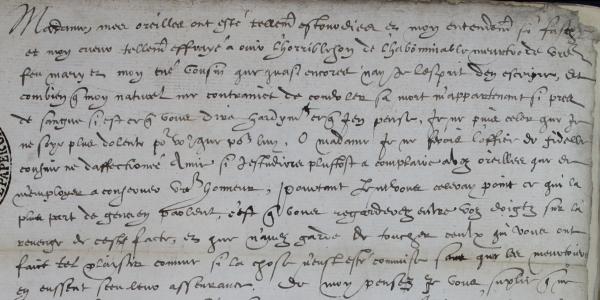 On 24 Feb 1567 Queen Elizabeth I of England and Ireland (age 33) wrote to her cousin Mary Queen of Scots (age 24) regarding the murder of Mary's husband [her former husband] Henry "Lord Darnley" Stewart (deceased) as follows:
On 24 Feb 1567 Queen Elizabeth I of England and Ireland (age 33) wrote to her cousin Mary Queen of Scots (age 24) regarding the murder of Mary's husband [her former husband] Henry "Lord Darnley" Stewart (deceased) as follows:


My ears have been so astounded and my heart so frightened to hear of the horrible and abominable murder of your husband (deceased) and my own cousin that I have scarcely spirit to write: yet I cannot conceal that I grieve more for you than him. I should not do the office of a faithful cousin and friend, if I did not urge you to preserve your honour, rather than look through your fingers at revenge on those who have done you that pleasure as most people say. I counsel you so to take this matter to heart, that you may show the world what a noble Princess and loyal woman you are. I write thus vehemently not that I doubt, but for affection. [Translated from the French; extract - lines 1-12]
On 07 May 1567 [her future husband] James "Lord Bothwell" Hepburn 1st Duke Orkney (age 33) and Jean Gordon Countess Bothwell and Sutherland (age 21) were divorced.
On 12 May 1567 [her future husband] James "Lord Bothwell" Hepburn 1st Duke Orkney (age 33) was created 1st Duke Orkney, 1st Marquess Fife.
On 15 May 1567 James "Lord Bothwell" Hepburn 1st Duke Orkney (age 33) and Mary Queen of Scots (age 24) were married in the Great Hall Holyrood House. She the daughter of King James V of Scotland and Mary of Guise Queen Consort Scotland. He the son of Patrick Hepburn 3rd Earl Bothwell and Agnes Sinclair Countess Bothwell. They were half third cousin once removed. He a great x 5 grandson of King Edward III of England. She a great granddaughter of King Henry VII of England and Ireland. 
In 1568 Thomas Howard 4th Duke of Norfolk (age 31) attended to hear evidence against Mary Queen of Scots (age 25) at York [Map].

In 1568 Walter Devereux 1st Earl Essex (age 26) was entrusted with the custody of Mary Queen of Scots (age 25).

On 02 May 1568 Mary Queen of Scots (age 25) escaped from Lochleven Castle, Kinross with the help of George Douglas of Helenhill (brother of William Douglas 6th Earl Morton (age 28), the castle's owner) and Claud Hamilton 1st Lord Paisley (age 21).
On 13 May 1568 the army of Mary Queen of Scots (age 25) commanded by Archibald Campbell 5th Earl Argyll (age 34) was defeated by the army of the Regent her illegitimate half-brother [her illegitimate half-brother] James Stewart 1st Earl Moray Regent (age 37).
John Campbell was killed.
William "Younger" Douglas 7th Lord Drumlanrig and Robert Seton 1st Earl Winton (age 15) fought.
Claud Hamilton 1st Lord Paisley (age 21) and George Seton 7th Lord Seton (age 37) fought for the Queen.
On 16 May 1568 Mary Queen of Scots (age 25) escaped across the Solway Firth into England. The following day, 17 May 1568 she wrote to her cousin Queen Elizabeth I of England and Ireland (age 34) from Workington Hall [Map]. The letter states ...

describes the treasonable actions of her enemies, who 'have robbed me of everything I had in the world' and expresses her confidence in Elizabeth 'not only for the safety of my life, but also to aid and assist me in my just quarrel'. Describing herself as Elizabeth's 'very faithful and affectionate good sister, cousin and escaped prisoner, Mary begs for an audience; 'I entreat you to send to fetch me as soon as you possibly can', for 'I am', she bemoans, 'in a pitiable condition, not only for a queen, but for a gentlewoman, for I have nothing in the world but what I had on my person when I made my escape, travelling sixty miles across the country the first day, and not having since ever ventured to proceed except by night, as I hope to declare before you if it pleases you to have pity, as I trust you will, upon my extreme misfortune.''
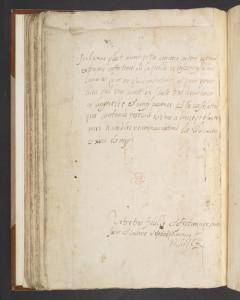 The following day, 18 May 1568 Mary Queen of Scots (age 25) was escorted to Carlisle Castle [Map].
The following day, 18 May 1568 Mary Queen of Scots (age 25) was escorted to Carlisle Castle [Map].
Archaeologia Volume 32 Section X. The Queen of Scots (age 25) landed on the shore of Cumberland on the 16th of May, 1568. On the next day she wrote from Workington to Queen Elizabeth (age 34), announcing her arrival. On the 18th she was conducted to Cockermouth, and the next day to Carlisle [Map]. There she remained till the 13th of July, when she was taken to Bolton [Map], castle of the Lord Scrope (age 34), in the North Riding. She was at Bolton for more than half a year. Her last letter written from that place is dated January 25, 1569, the day before she reluctantly set out on her journey southward.


On 26 Jan 1569 Mary Queen of Scots (age 26) was moved to the custody of George Talbot 6th Earl of Shrewsbury (age 41) and his wife Bess of Hardwick (age 42) at Tutbury Castle, Staffordshire [Map].

On 02 Feb 1569 George Talbot 6th Earl of Shrewsbury (age 41) was Keeper of Mary Queen of Scots (age 26) at Tutbury Castle, Staffordshire [Map].

In Jun 1569 George Talbot 6th Earl of Shrewsbury (age 41) was Keeper of Mary Queen of Scots (age 26) at Wingfield Manor [Map].

In Sep 1569 George Talbot 6th Earl of Shrewsbury (age 41) was Keeper of Mary Queen of Scots (age 26) at Tutbury Castle, Staffordshire [Map].

On 23 Jan 1570 [her illegitimate half-brother] James Stewart 1st Earl Moray Regent (age 39) was assassinated at Linlithgow by James Hamilton of Bothwellhaugh, a supporter of Mary Queen of Scots (age 27). His daughter Elizabeth Stewart 2nd Countess Moray (age 4) succeeded 2nd Countess Moray. As he was passing in a cavalcade in the main street below, Hamilton fatally wounded him with a carbine shot from a window of his uncle Archbishop Hamilton's (age 57) house. He was the first head of government to be assassinated by a firearm.
Around Mar 1571 the Ridolphi Plot was a Catholic plan to assassinate Queen Elizabeth I of England and Ireland (age 37) and replace her with Mary Queen of Scots (age 28) would would marry Thomas Howard 4th Duke of Norfolk (age 34). Queen Elizabeth I of England and Ireland (age 37) and Thomas Howard 4th Duke of Norfolk (age 34) were cousins through their Great Grandmother Elizabeth Tilney Countess of Surrey.



On 04 Sep 1571 Alexander Stewart (age 39) was killed by supporters of Mary Queen of Scots (age 28) in Stirling [Map].

 Around 1576 Unknown Painter. Portrait of Mary Queen of Scots (age 33).
Around 1576 Unknown Painter. Portrait of Mary Queen of Scots (age 33).
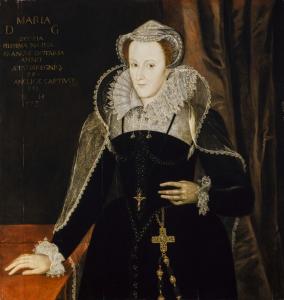 In 1576. After Nicholas Hilliard (age 29). Portrait of Mary Queen of Scots (age 33).
In 1576. After Nicholas Hilliard (age 29). Portrait of Mary Queen of Scots (age 33).
In Oct 1577 Walter Mildmay (age 56) and William Cecil 1st Baron Burghley (age 57) visited Mary Queen of Scots (age 34) at Chatsworth House [Map] after she had announced that she had important secrets to reveal to Elizabeth.


In Apr 1578 [her husband] James "Lord Bothwell" Hepburn 1st Duke Orkney (age 44) died at Dragsholm Castle. His nephew Francis Stewart 5th Earl Bothwell (age 15) succeeded 5th Earl Bothwell at Great Hall Stirling Castle.
22 Aug 1582. The Raid of Ruthven was a plot by several nobles led by William Ruthven 1st Earl Gowrie (age 39) to kidnap the fifteen years old [her son] King James VI of Scotland (age 16), son of Mary Queen of Scots (age 39), (before he became King of England) to reform the government of Scotland.
The nobles included John Erskine 19th Earl Mar (age 20), Thomas Lyon Master of Glamis, Robert Boyd 5th Lord Boyd (age 65), Patrick Lindsay 6th Lord Lindsay of the Byres (age 61), and David Erskine Commendator of Dryburgh.
They were opposed by Esme Stewart 1st Duke Lennox (age 40) and James Stewart 1st Earl Arran who controlled the government.
King James VI of Scotland (age 16) was captured whilst hunting near Ruthven Castle.
The rebels were joined by Francis Stewart 5th Earl Bothwell (age 19) and James Cunningham 7th Earl Glencairn (age 30).
Esme Stewart 1st Duke Lennox (age 40) was exiled; he died a year later in Paris. James Stewart 1st Earl Arran was imprisoned.
In Jan 1585 John St John 2nd Baron St John (age 50) made keeper of Mary Queen of Scots (age 42) at Tutbury Castle, Staffordshire [Map].

In 1586 [her illegitimate brother-in-law] Henri Valois (age 35) died.
In 1586 Thomas Sackville 1st Earl Dorset (age 50) conveyed to Mary Queen of Scots (age 43) the sentence of death confirmed by the English Parliament.

The Letter Books of Amias Paulet Keeper of Mary Queen of Scots Published 1874 Marys Execution. The inventory of the property of the Queen of Scots (age 43), alluded to in the foregoing letter, is printed in Prince Labanoff's collection, in which it occupies more than twenty pages. Poulet (age 53) compiled it by summoning Mary's servants before him, and requesting each of them to give him a written note of all that the Queen (age 43) had given them. A comparison of this inventory, made after Mary's death, with a former one, dated June 13, 1586, which Prince Labanoff found amongst M. de Chateauneuf's papers enables us to see that Mr. Froude has been led into a curious error respecting Mary Stuart's dress at the scaffold by the anonymous writer whose account he follows in preference to the narratives drawn up by responsible witnesses. It may seem to be of little importance, but as Mr. Froude has chosen to represent the last moments of Mary's life as "brilliant acting throughout," he should at least have been accurate in his details. He even goes so far as to say that she was deprived of the assistance of her chaplain for "fear of some religious melodrame." As to her dress, he says, "She stood on the black scaffold with the black figures all around her, blood-red from head to foot. Her reasons for adopting so extraordinary a costume must be left to conjecture. It is only certain that it must have been carefully studied, and that the pictorial effect must have been appalling." And he quotes from the Vray Rapport the words, "Ainsy fut executee toute en rouge. [Translation: So was executed all in red.]".
The rouge was not "blood-red," but a dark red brown. Blackwood says that she wore, with a pourpoint or bodice of black satin, "une Juppe de vellours cramoisi brun," and the narrative called La Mort de la Royne d'Escosse says the same. There it is in the June inventory, "Une juppe de velloux cramoisy brun, bandee de passement noir, doublee de taffetas de couleur brune." In the inventory taken after her death it is wanting. As it happens, if she had wished to be "blood-red," she might have been so, for in the wardrobe there was "satin figure incarnat," "escarlate," and "satin incarnate." These figure both in the June and February inventories. When she was dressed "le plus proprement qu'elle put et mieux que de coutume," she said to her maids of honour, "Mes amies, je vous eusse laisse plustost cet accoustrement que celui d'hier, sinon qu'il faut que j'aille a la mort un peu honnorablement, et que j'aye quelque chose plus que le commun." "La tragedie finie," continues Blackwood, "les pauvres damoiselles, soigneuses de rhonneur de leur maistresse s'adresserent a Paulet son gardien, et le prierent que le bourreau ne touchast plus au corps de sa Majeste, et qu'il leur fust permis de la despouiller, apres que le monde seroit retire, afin qu'aucune indignite ne fust faitte au corps, promettant de luy rendre la despouille, et tout ce qu'il pourroit demander. Mais ce maudict et espouventable Cerbere les renvoya fort lourdement, leur commandant de sortir de la salle. Cependant le bourreau la dechausse, et la manie a sa discretion. Apres qu'il eust fait tout ce qu'il voulust, le corps fut porte en une chambre joignante celle de ces serviteurs, bien fermee de peur qu'ils n'y entrassent pour luy rendre leurs debvoirs. Ce qui augmenta grandement leur ennuy, ils la voyoient par le trou de la serrure demy couverte d'un morceau de drop de bure qu'on avoit arrache de la table du billard, dont nous avous parle cy dessus, et prioyent Dieu a la porte, dont Paulet (age 53) s'appercevant fist boucher le trou.".
The executioner snatched from her hand the little gold cross that she took from her neck. "Sa Majeste osta hors de son col line croix d'or, qu'elle vouloit bailler a mie de ses filles, disant au maistre d'oeuvres, Mon amy, cecy n'est pas k vostre usage, laissez la a cette damoiselle elle vous baillera en Argent plus qu'elle ne vaut; il luy arracha d'entre les mains fort rudement, disant, C'est mon droit. C'eust este merveille qu'elle eust trouve courtoisie en un bourreau Anglois, qui ne I'avoit jamais sceu trouver entre les plus honestes du pais, sinon tant qu'ils en pouvoient tirer de profit." It was worthy of Poulet (age 53) to insist that, even though everything Mary wore was to be burnt and the headsman was to lose his perquisites lest he should sell them for relics, it was to be by his hands that they should be taken from the person of his victim.
On 06 Jul 1586 Anthony Babington (age 24) wrote to Mary Queen of Scots (age 43), telling her that he and a group of friends were planning to assassinate Queen Elizabeth I of England and Ireland (age 52).


Before 14 Oct 1586 Walter Mildmay (age 65) went to Fotheringay Castle, Northamptonshire [Map] to inform Mary Queen of Scots (age 43) of her forthcoming trial in which he subsequently took part as one of the special commissioners.

On 14 Oct 1586 Henry Compton 1st Baron Compton (age 42), Lewis Mordaunt 3rd Baron Mordaunt (age 48), Henry Wentworth 3rd Baron Wentworth (age 28), Christopher Wray (age 62), John Stourton 9th Baron Stourton (age 33) and Edward Zouche 11th Baron Zouche Harringworth (age 30) sat in judgement on Mary Queen of Scots (age 43) in the Presence Chamber of Fotheringay Castle, Northamptonshire [Map].





Anthony Browne 1st Viscount Montagu (age 57), George Clifford 3rd Earl of Cumberland (age 28), Henry Clinton 2nd Earl Lincoln (age 45), Henry Grey 6th Earl Kent (age 45), Edward Manners 3rd Earl of Rutland (age 37), Henry Stanley 4th Earl of Derby (age 55), Ambrose Dudley 3rd Earl Warwick (age 56), George Talbot 6th Earl of Shrewsbury (age 58), Edward de Vere 17th Earl of Oxford (age 36), William Somerset 3rd Earl of Worcester (age 60), William Cecil 1st Baron Burghley (age 66), Henry Herbert 2nd Earl Pembroke (age 48) and Thomas Bromley (age 56) were present on the side of the Presence Chamber of Fotheringay Castle, Northamptonshire [Map].











John St John 2nd Baron St John (age 51) was present on the left side of the Presence Chamber of Fotheringay Castle, Northamptonshire [Map].
John Stourton 9th Baron Stourton (age 33) was a juror.
Edward Manners 3rd Earl of Rutland (age 37) was a commissioner.
On 25 Oct 1586 Mary Queen of Scots (age 43) was convicted and sentenced to death. Only Edward Zouche 11th Baron Zouche Harringworth (age 30) offered any dissent against the judgement. 

In Nov 1586 Robert Beale (age 45) was sent with Thomas Sackville 1st Earl Dorset (age 50) to Fotheringay Castle, Northamptonshire [Map] to notify Mary Queen of Scots (age 43) that sentence of death had been passed upon her.

On 01 Feb 1587 Queen Elizabeth I (age 53) signed the Death Warrant of Mary Queen of Scot's (age 44) (her first cousin once-removed). Elizabeth gave orders of Mary's jailor Amyas Paulett to complete the task. He refused.

On 07 Feb 1587 Mary Queen of Scots (age 44) having been informed that she was to be executed the next day wrote her will ...
From The Last Days of Mary Stuart, Samuel Cowan, 1907 ...
In the name of the Father, son, and Holy Ghost, I, Mary, by the grace of God, Queen of Scotland and Dowager of France, being on the point of death and not having any means of making my will, have myself committed these articles in writing, and I will and desire that they have the same force as if they were made in due form:-.
In the first place, I declare that I die in the Catholic Apostolic and Romish faith. First, I desire that a complete service be performed for my soul in the Church of St. Denis in France, and another in St. Peter's at Rheims [Map], where all my servants are to attend in such manner as they may be ordered to do by those to whom I have given directions and who are named therein.
Further, that an annual obit be founded for prayers for my soul in perpetuity in such place and after such manner as shall be deemed most convenient. To furnish funds for this I will that my houses at Fontainebleau be sold, hoping that the King will render me assistance, as I have requested him to do in my memorandum.
I will that my estate of Trespagny be kept by my cousin de Guise for one of his daughters, if she should come to be married. In these quarters I relinquish half of the arrears due to me, or a part, on condition that the others be paid, in order to be expended by my executors in perpetual alms. To carry this into effect the better, the documents shall be looked out and delivered according to the assignment for accomplishing this.
I will also that the money which may arise from my lawsuit with Secondat, be distributed as follows:- First, in the discharge of my debts and orders first place mentioned and which are not yet paid; in the first place, the 2000 crowns to Curle, which I desire to be paid without any hesitation, they being a marriage portion, upon which neither Nau nor any other person has any claim, whatever obligation he may hold, inasmuch as it is only fictitious, and the money is mine, not borrowed, which since I did but show him, and afterwards withdrew it; and it was taken from me with the rest at Chartley [Map]; the which I give him, provided he can recover it agreeably to my promise in payment of the four thousand francs as promised at my death, one thousand as a marriage portion for an own sister, and he having asked me for the rest for his expenses in prison.
As to the payment of a similar sum to Nau it is not obligatory, and therefore it has always been my intention that it should be paid last, and then only in case he should make it appear that he has not acted contrary to the conditions upon which I gave it him, and to which my servants were witnesses. As regards the 1200 crowns which he has placed to my account as having been borrowed by him for my use - 600 of Beauregard, 300 from Jervis, and the remainder from I know not whom, he must repay them out of his own money, and I must be quit and my order annulled, as I have not received any part of it, consequently it must be still in his possession, unless he has paid it away. Be this as it may, it is necessary that this sum should revert to me, I having received nothing; and in case it has not been paid away, I must have recourse to his property.
I further direct that Pasquier shall account for the moneys that he has expended and received by order of Nau, from the hands of the servants of Mons. de Chateauneuf, the French Ambassador.
Further, I will that my accounts be audited and my treasure paid.
Further, that the wages and sums due to my household, as well for the last as for the present year, be paid them before all other things, both wages and pensions, excepting the pensions of Nau and Curle, until it is ascertained what there is remaining, or whether they merited any pensioning from me, unless the wife of Curle be in necessity or be ill-treated on my account; the wages of Nau after the same manner.
I will that the 2400 francs which I have given to Jane Kennedy (afterwards married to Sir Andrew Melville; and was drowned by the upsetting of a boat, the year of the marriage of James VI,) be paid to her in money, as it was stated in my first deed of gift, which done, the pension of Willie Douglas shall revert to me, which I give to Fontenay (Nau's brother) for services and expenses for which he has had no compensation.
I will that the 4000 francs of that banker's be applied for and repaid; I have forgotten his name, but the Bishop of Glasgow will readily recollect it; and if the first order be not honoured, I desire that another may be given in the first money from Secondat.
The 10,000 francs which the ambassador has received for me, I will that they be distributed among my servants who are now going away, viz-.
First, 2000 francs to my physician; 2000 francs to Elizabeth Curle; 2000 to Sebastian Page; 2000 to Mary Page, my goddaughter; 1000 to Beauregard; 1000 to Gourgon; 1000 to Jervis.
Further, that out of the rest of my revenue with the remainder of Secondats and all other casualties, I will that:
5000 francs be given to the Foundling Hospital at Rheims; to my scholars 2000 francs. To four mendicants such sum as my executors may think fit, according to the means in their hands; 500 francs to the hospitals; to Martin escuyer de cuisine, 1000 francs; 1000 francs to Annibal, whom I recommend to my cousin de Guise, his godfather, to place in some situation for his life, in his service. I leave 500 francs to Nicholas, and 500 francs to his daughters when they marry. I leave 500 francs to Robert Hamilton, and beg my son to take him and Monsieur de Glasgow, or the Bishop of Ross. I leave to Didier his registership, subject to the approbation of the King. I give 500 francs to Jean Lauder, and beg my cousin of Guise, or of Mayne, to take him into their service, and Messieurs de Glasgow and de Ross to see him provided for. I will that his father be paid his wages and leave him 500 francs; 1000 francs to be paid to Gourgon for money and other things with which he supplied me in my necessity.
I will that if Bourgoyne should perform the journey agreeably to the vow which he made for me to St. Nicholas, that 1500 francs be paid to him for this purpose.
I leave according to my slender means, 6000 francs to the Bishop of Glasgow, and 3000 to the Bishop of Ross.
And I leave the gift of casualties and reserved seigneurial rights to my godson the son of Monsieur de Ruissieu.
I give 300 francs to Laurenz, and 300 to Suzanne; and I leave 10,000 francs among the four persons who have been m y sureties and to Varmy the solicitor.
I will that the money arising from the furniture which I have ordered to be sold in London shall go to defray the travelling expenses of my servants to France.
My coach I leave to carry my ladies, and the horses, which they can sell or do what they like with.
There remain about 300 crowns due to Bourgoyne for the wages of past years, which I desire may be paid him,.
I leave 2000 francs to Sir Andrew Melville, my steward.
I appoint my cousin the Duke of Guise (age 36), principal executor of my will; after him, the Archbishop of Glasgow, the Bishop of Ross, and Monsieur de Ruissieu, my chancellor.
I desire that Le Preau may without obstacle hold his two prebends.
I recommend Mary Page, my goddaughter, to my cousin, Madame de Guise, and beg her to take her into her service, and my aunt de Saint Pierre to get Mowbray some good situation or retain her in her service for the honour of God.
Done this day 7th February, 1587. Execution of Mary Queen of Scots.
On 07 Feb 1587 Mary Queen of Scots (age 44) was informed she was to be executed the following day. During the course of the night she wrote to her former brother-in-law [her former brother-in-law] Henry III King France (age 35) ...

To the most Christian king, my brother and old ally,.
Royal brother, having by God's will, for my sins I think, thrown myself into the power of the Queen my cousin, at whose hands I have suffered much for almost twenty years, I have finally been condemned to death by her and her Estates. I have asked for my papers, which they have taken away, in order that I might make my will, but I have been unable to recover anything of use to me, or even get leave either to make my will freely or to have my body conveyed after my death, as I would wish, to your kingdom where I had the honor to be queen, your sister and old ally.
Tonight, after dinner, I have been advised of my sentence: I am to be executed like a criminal at eight in the morning. I have not had time to give you a full account of everything that has happened, but if you will listen to my doctor and my other unfortunate servants, you will learn the truth, and how, thanks be to God, I scorn death and vow that I meet it innocent of any crime, even if I were their subject. The Catholic faith and the assertion of my God-given right to the English crown are the two issues on which I am condemned, and yet I am not allowed to say that it is for the Catholic religion that I die, but for fear of interference with theirs. The proof of this is that they have taken away my chaplain, and although he is in the building, I have not been able to get permission for him to come and hear my confession and give me the Last Sacrament, while they have been most insistent that I receive the consolation and instruction of their minister, brought here for that purpose. The bearer of this letter and his companions, most of them your subjects, will testify to my conduct at my last hour. It remains for me to beg Your Most Christian Majesty, my brother-in-law and old ally, who have always protested your love for me, to give proof now of your goodness on all these points: firstly by charity, in paying my unfortunate servants the wages due them - this is a burden on my conscience that only you can relieve: further, by having prayers offered to God for a queen who has borne the title Most Christian, and who dies a Catholic, stripped of all her possessions. As for my son, I commend him to you in so far as he deserves, for I cannot answer for him. I have taken the liberty of sending you two precious stones, talismans against illness, trusting that you will enjoy good health and a long and happy life. Accept them from your loving sister-in-law, who, as she dies, bears witness of her warm feeling for you. Again I commend my servants to you. Give instructions, if it please you, that for my soul's sake part of what you owe me should be paid, and that for the sake of Jesus Christ, to whom I shall pray for you tomorrow as I die, I be left enough to found a memorial mass and give the customary alms.
Wednesday, at two in the morning.
Your most loving and most true sister.
Mary R.
On 08 Feb 1587 Mary Queen of Scots (age 44) was beheaded in the Great Hall at Fotheringay Castle, Northamptonshire [Map].
George Talbot 6th Earl of Shrewsbury (age 59), Henry Grey 6th Earl Kent (age 46), Richard Knightley (age 54) and Henry Wriothesley 3rd Earl of Southampton (age 13) witnessed her execution. 



There are few extant original sources describing Mary's execution. Those that do exist are somewhat contradictory. They include The letter-books of Sir Amias Poulet, Keeper of Mary Queen of Scots, the Calendar of State Papers, Spain (known as the Simancas), Volume 4, 1587-1603 and Beale's sketch of the execution. The most reliable primary source appears to be Jebb's De vita et rebus gestis serenissimæ principis Mariæ Scotorum Reginæ published in French.
Original Letters Illustrative of English History Second Series Volume III. Ellis notes that "the present narrative is from the Lansdowne MS. 51. art. 46. It is indorsed in Lord Burghley's hand, "8 Feb. 1586. The Manner of the Q. of Scotts death at Fodrynghay, wr. by Ro. Wy. [Possibly Richard Wigmore?]
A Reporte of the manner of the execution of the Sc. Q. performed the viijth. of February, Anno 1586 [modern dating 1587] in the great hall at Fotheringhay [Map], with relacion of speeches uttered and accions happening in the said execution, from the delivery of the said Sc. Q. to Mr Thomas Androwes Esquire Sherife of the County of Northampton unto the end of said execution..
THE READER shall now be presented with the Execution of the Queen of Scots (age 44) which was to the Court or three Statements of this Transaction were There was a Short one copies of which are Manuscripts Jul F vi foll 246 266 b and b Another a Copy of the Account of the Earl to the Lords of the Council dated on the day is MS Calig C ix fol 163 And there is a Office somewhat longer said to have been drawn evidently one of her servants present Narrative is from the Lansdowne MS in Lord Burghley s hand 8 Feb 1586 of Scotts death at Fodrynghay wr by Ro Wy Queen s death have been dressed up from writers but it is here given accurate and entire.
First, the said Scottish Queen, being carried by two of Sir Amias Paulett's (age 54) gentlemen, and the Sheriff (age 46) going before her, came most willingly out of her chamber into an entry next the Hall [Map], at which place the Earl of Shrewsbury (age 59) and the Earl of Kent (age 46), commissioners for the execution, with the two governors of her person, and divers knights and gentlemen did meet her, where they found one of the Scottish Queen's servants, named Melvin [NOTE. Possibly Andrew Melville of Garvock Steward], kneeling on his knees, who uttered these words with tears to the Queen of Scots (age 44), his mistress, "Madam, it will be the sorrowfullest message that ever I carried, when I shall report that my Queen (age 44) and dear mistress is dead." Then the Queen of Scots, shedding tears, answered him, "You ought to rejoice rather than weep for that the end of Mary Stuart's (age 44) troubles is now come. Thou knowest, Melvin, that all this world is but vanity, and full of troubles and sorrows; carry this message from me, and tell my friends that I die a true woman to my religion, and like a true Scottish woman and a true Frenchwoman. But God forgive them that have long desired my end; and He that is the true Judge of all secret thoughts knoweth my mind, how that it ever hath been my desire to have Scotland and England united together. Commend me to my son, and tell him that I have not done anything that may prejudice his kingdom of Scotland; and so, good Melvin, farewell;" and kissing him, she bade him pray for her.


Then she turned to the Lords and told them that she had certain requests to make unto them. One was for a sum of money, which she said Sir Amyas Paulet (age 54) knew of, to be paid to one Curle her servant; next, that all her poor servants might enjoy that quietly which by her Will and Testament she had given unto them; and lastly, that they might be all well entreated, and sent home safely and honestly into their countries. "And this I do conjure you, my Lords, to do.".

Answer was made by Sir Amyas Paulet (age 54), "I do well remember the money your Grace speaketh of, and your Grace need not to make any doubt of the not performance of your requests, for I do surely think they shall be granted.".
"I have," said she, "one other request to make unto you, my Lords, that you will suffer my poor servants to be present about me, at my death, that they may report when they come into their countries how I died a true woman to my religion.".
Then the Earl of Kent (age 46), one of the commissioners, answered, "Madam, it cannot well be granted, for that it is feared lest some of them would with speeches both trouble and grieve your Grace, and disquiet the company, of which we have had already some experience, or seek to wipe their napkins in some of your blood, which were not convenient." "My Lord," said the Queen of Scots, "I will give my word and promise for them that they shall not do any such thing as your Lordship has named. Alas! poor souls, it would do them good to bid me farewell. And I hope your Mistress (age 53), being a maiden Queen, in regard of womanhood, will suffer me to have some of my own people about me at my death. And I know she hath not given you so straight a commission, but that you may grant me more than this, if I were a far meaner woman than I am." And then (seeming to be grieved) with some tears uttered these words: "You know that I am cousin to your Queen (age 53) [NOTE. They were first-cousin once-removed], and descended from the blood of Henry the Seventh [NOTE. She was a Great Granddaughter of Henry VII King England and Ireland 1457-1509], a married Queen of France [NOTE. She had married [her former husband] Francis II King France King Consort Scotland], and the anointed Queen of Scotland.".


Whereupon, after some consultation, they granted that she might have some of her servants according to her Grace's request, and therefore desired her to make choice of half-a-dozen of her men and women: who presently said that of her men she would have Melvin, her apothecary, her surgeon, and one other old man beside; and of her women, those two that did use to lie in her chamber.
After this, she being supported by Sir Amias's (age 54) two gentlemen aforesaid, and Melvin carrying up her train, and also accompanied with the Lords, Knights, and Gentlemen aforenamed, the Sheriff (age 46) going before her, she passed out of the entry into the Great Hall [Map], with her countenance careless, importing thereby rather mirth than mournful cheer, and so she willingly stepped up to the scaffold which was prepared for her in the Hall, being two feet high and twelve feet broad, with rails round about, hung and covered with black, with a low stool, long cushion, and block, covered with black also. Then, having the stool brought her, she sat her down; by her, on the right hand, sat the Earl of Shrewsbury (age 59) and the Earl of Kent (age 46), and on the left hand stood the Sheriff (age 46), and before her the two executioners; round about the rails stood Knights, Gentlemen, and others.

Then, silence being made, the Queen's Majesty's Commission for the execution of the Queen of Scots (age 44) was openly read by Mr. Beale, clerk of the Council (age 46); and these words pronounced by the Assembly, "God save the Queen." During the reading of which Commission the Queen of Scots (age 44) was silent, listening unto it with as small regard as if it had not concerned her at all; and with as cheerful a countenance as if it had been a pardon from her Majesty (age 53) for her life; using as much strangeness in word and deed as if she had never known any of the Assembly, or had been ignorant of the English language.

Then one Doctor Fletcher, Dean of Peterborough (age 42), standing directly before her, without the rail, bending his body with great reverence, began to utter this exhortation following: "Madam, the Queen's most excellent Majesty," &c, and iterating these words three or four times, she told him, "Mr. Dean (age 42), I am settled in the ancient Catholic Roman religion, and mind to spend my blood in defence of it." Then Mr. Dean (age 42) said: "Madam, change your opinion, and repent you of your former wickedness, and settle your faith only in Jesus Christ, by Him to be saved." Then she answered again and again, "Mr. Dean (age 42), trouble not yourself any more, for I am settled and resolved in this my religion, and am purposed therein to die." Then the Earl of Shrewsbury (age 59) and the Earl of Kent (age 46), perceiving her so obstinate, told her that since she would not hear the exhortation begun by Mr. Dean (age 42), "We will pray for your Grace, that it stand with God's will you may have your heart lightened, even at the last hour, with the true knowledge of God, and so die therein." Then she answered, "If you will pray for me, my Lords, I will thank you; but to join in prayer with you I will not, for that you and I are not of one religion.".


Then the Lords called for Mr. Dean (age 42), who, kneeling on the scaffold stairs, began this prayer, "O most gracious God and merciful Father," &c, all the Assembly, saving the Queen of Scots (age 44) and her servants, saying after him. During the saying of which prayer, the Queen of Scots (age 44), sitting upon a stool, having about her neck an Agnus Dei, in her hand a crucifix, at her girdle a pair of beads with a golden cross at the end of them, a Latin book in her hand, began with tears and with loud and fast voice to pray in Latin; and in the midst of her prayers she slided off from her stool, and kneeling, said divers Latin prayers; and after the end of Mr. Dean's (age 42) prayer, she kneeling, prayed in English to this effect: "For Christ His afflicted Church, and for an end of their troubles; for her son; and for the Queen's Majesty (age 53), that she might prosper and serve God aright." She confessed that she hoped to be saved "by and in the blood of Christ, at the foot of whose Crucifix she would shed her blood." Then said the Earl of Kent (age 46), "Madam, settle Christ Jesus in your heart, and leave those trumperies." Then she little regarding, or nothing at all, his good counsel, went forward with her prayers, desiring that "God would avert His wrath from this Island, and that He would give her grief and forgiveness for her sins." These, with other prayers she made in English, saying she forgave her enemies with all her heart that had long sought her blood, and desired God to convert them to the truth; and in the end of the prayer she desired all saints to make intercession for her to Jesus Christ, and so kissing the crucifix, and crossing of her also, said these words: "Even as Thy arms, O Jesus, were spread here upon the Cross, so receive me into Thy arms of mercy, and forgive me all my sins.".


Her prayer being ended, the executioners, kneeling, desired her Grace to forgive them her death; who answered, "I forgive you with all my heart, for now, I hope, you shall make an end of all my troubles." Then they, with her two women, helping of her up, began to disrobe her of her apparel; she never changed her countenance, but with smiling cheer she uttered these words, "that she never had such grooms to make her unready, and that she never put off her clothes before such a company.".
Then she, being stripped of all her apparel saving her petticoat and kirtle, her two women beholding her made great lamentation, and crying and crossing themselves prayed in Latin; she, turning herself to them, embracing them, said these words in French, "Ne criez vous; j'ay promis pour vous;" and so crossing and kissing them, bade them pray for her, and rejoice and not weep, for that now they should see an end of all their mistress's (age 44) troubles. Then she, with a smiling countenance, turning to her men servants, as Melvin and the rest, standing upon a bench nigh the scaffold, who sometime weeping, sometime crying out aloud, and continually crossing themselves, prayed in Latin, crossing them with her hand bade them farewell; and wishing them to pray for her even until the last hour.
This done, one of the women having a Corpus Christi cloth lapped up three-corner ways, kissing it, put it over the Queen of Scots' (age 44) face, and pinned it fast to the caul of her head. Then the two women departed from her, and she kneeling down upon the cushion most resolutely, and without any token or fear of death, she spake aloud this Psalm in Latin, "In te, Domine, confido, non confundar in eternum," &c. [Ps. xxv.]. Then, groping for the block, she laid down her head, Putting her chin over the block with both her hands, which holding there, still had been cut off, had they not been espied. Then lying upon the block most quietly, and stretching out her arms, cried, "In manus tuas, Domine," &c, three or four times. Then she lying very still on the block, one of the executioners holding of her slightly with one of his hands, she endured two strokes of the other executioner with an axe, she making very small noise or none at all, and not stirring any part of her from the place where she lay; and so the executioner cut off her head, saving one little grisle, which being cut asunder, he lifted up her head to the view of all the assembly, and bade "God save the Queen." Then her dressing of lawn falling off from her head, it appeared as grey as one of threescore and ten years old, polled very short, her face in a moment being so much altered from the form she had when she was alive, as few could remember her by her dead face. Her lips stirred up and down a quarter of an hour after her head was cut off.
Then Mr. Dean (age 42) said with a loud voice, "So perish all the Queen's enemies;" and afterwards the Earl of Kent (age 46) came to the dead body, and standing over it, with a loud voice said, "Such end of all the Queen's and the Gospel's enemies.".
Then one of the executioners pulling off her garters, espied her little dog which was crept under her clothes, which could not be gotten forth but by force, yet afterward would not depart from the dead corpse, but came and lay between her head and her shoulders, which being imbrued with her blood, was carried away and washed, as all things else were that had any blood was either burned or clean washed; and the executioners sent away with money for their fees, not having any one thing that belonged unto her. And so, every man being commanded out of the Hall, except the Sheriff (age 46) and his men, she was carried by them up into a great chamber lying ready for the surgeons to embalm her.
The Death of Mary Queen of Scots. 08 Feb 1587. Her Majesty (age 44), as well as her attendants, thought that they intended to sever her head in the French manner, with a sword. Thus, while she was sitting, assuming that this was how they would proceed, she held herself rigidly, extending her neck with joined hands, without being bound in any way. Clutching her crucifix, which she never let go of, she recited aloud, "In te, Domine speravi," and so on, with great fervor. Then, the two executioners took her, one on each side, by the shoulders, and made her kneel. Wanting to lay her down, and she, expecting the blow, extended her neck as if singing, continuously praying to God. They continued to lay her down on her stomach the length of her body, making her place her neck on a block prepared for this purpose, towards the end of the scaffold. Having placed their hand under her chin, perhaps to allow her to speak freely, it was removed for fear that it might be cut off with her head. The master executioner, wielding a wide axe with a blade like those used to split wood, delivered a blow as she loudly said, "In manus tuas." This poorly aimed blow only touched the back of her head and did not penetrate deeply. He struck again for the second time, cutting a significant portion of the neck, which he finished severing on the third attempt.
On 01 Aug 1587 Mary Queen of Scots was buried at Peterborough Cathedral [Map]. Bishop William Wickham (age 48) preached.
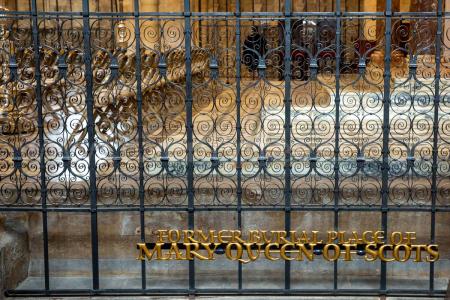
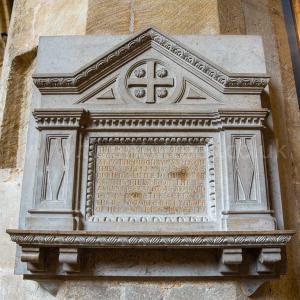
The Letter Books of Amias Paulet Keeper of Mary Queen of Scots Published 1874 Marys Execution. The household of the late Queen were not allowed to depart as soon as Poulet (age 54) expected. They were detained at Fotheringay [Map], from motives of policy, till the 3rd of August, when the funeral of their mistress having been at last performed, they were set free. Some of them were taken to Peterborough [Map] to accompany the corpse and to be present at the funeral ceremonies on the 1st of August. Amongst them, in the order of the procession, it is surprising to find Mary's chaplain, "Monsieur du Preau, aumosnier, en long manteau, portant une croix d'Argent en main." The account of the funeral from which this is taken, written by one of the late Queen's household, takes care to mention that when they reached the choir of Peterborough Minster, and the choristers began "a chanter a leur fagon en langage Anglois," they all, with the exception of Andrew Melville and Barbara Mowbray, left the church and walked in the cloisters till the service was finished. "Si les Anglois," he says, "et principalement le Roy des heraux ... estoit en extreme cholere, d'autant estoient joieux et contents les Catholiques".

Poulet left for London, and as long as Mary's servants were detained at Fotheringay [Map], he seems to have retained jurisdiction over them. It was to him, therefore, that Melville and Bourgoin applied in March for leave to sell their horses and to write into France respecting the bequests made to them by the Queen of Scots; and to him that Darrell forwarded in June "the petition of the whole household and servants of the late Queen of Scotland remaining at Fotheringay," begging to be released from their prison and to be allowed to leave the country.
In 1612 the remains of Mary Queen of Scots were moved to Westminster Abbey [Map] on the orders of her son [her son] King James I of England and Ireland and VI of Scotland (age 45).
Evelyn's Diary. 30 Aug 1654. Taking leave of my friends, who had now feasted me more than a month, I, with my wife (age 19), etc., set our faces toward home, and got this evening to Peterborough [Map], passing by a stately palace (Thorpe) of St. John's (one deep in the blood of our good king), built out of the ruins of the Bishop's palace and cloister. The church is exceeding fair, full of. Monuments of great antiquity. Here lies Queen Catherine, the unhappy wife of Henry VIII, and the no less unfortunate Mary, Queen of Scots. On the steeple, we viewed the fens of Lincolnshire, now much inclosed and drained with infinite expense, and by many sluices, cuts, mounds, and ingenious mills, and the like inventions; at which the city and country about it consisting of a poor and very lazy sort of people, were much displeased.



Pepy's Diary. 24 Nov 1665. After dinner Captain Cocke (age 48) and I about some business, and then with my other barrel of oysters home to Greenwich, Kent [Map], sent them by water to Mrs. Penington, while he and I landed, and visited Mr. Evelyn (age 45), where most excellent discourse with him; among other things he showed me a ledger of a Treasurer of the Navy, his great grandfather, just 100 years old; which I seemed mighty fond of, and he did present me with it, which I take as a great rarity; and he hopes to find me more, older than it. He also shewed us several letters of the old Lord of Leicester's, in Queen Elizabeth's time, under the very hand-writing of Queen Elizabeth, and Queen Mary, Queen of Scotts; and others, very venerable names.


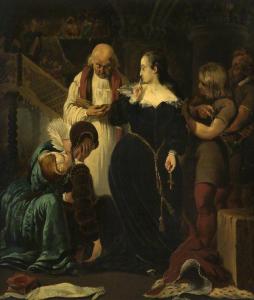 Around 1841. Ford Madox Brown (age 19). "The Execution of Mary, Queen of Scots". The moment the Mary tells Bishop Richard Fletcher to stop praying for her in the Protestant faith. His first wife Elizabeth (age 22) modelled for one of the figures
Around 1841. Ford Madox Brown (age 19). "The Execution of Mary, Queen of Scots". The moment the Mary tells Bishop Richard Fletcher to stop praying for her in the Protestant faith. His first wife Elizabeth (age 22) modelled for one of the figures
Elizabeth Bromley: On 10 Sep 1818 she was born to Samuel Bromley and Mary Madox at Butt Lane, Deptford. She was baptised 02 Oct 1818. In Apr 1841 Ford Madox Brown and she were married. They were half first cousins. On 05 Jun 1846 Elizabeth Bromley died of tuberculosis in Paris. She was buried at Kensal Green Cemetery.
Archaeologia Volume 32 Section X. Letter from the Viscount Mahon (age 41), President, FRS. &c. &c., to Sir Henry Ellis (age 68) K.H. Secretary upon the wish expressed to his Lordship by Prince Alexander Labanoff to obtain the opinion of the best English Antiquaries respecting the alleged Residence of Mary Queen of Scots at Hardwick Hall [Map].

Read 14 May 1846.
My dear Sir Henry
Grosvenor Place, May 11. 1846.
In a letter dated St Petersburg the 15th of March last, which I have received fron Prine Alexander Labanoff, the accomplished editor of the "Correspondence of Queen Mary of Scots," he expresses anxiety to ascertain the opinion of the best English antiquaries respecting the alleged residence of that princess at Hardwick Hall [Map], as is well known, the property of the Duke of Devonshire. He states, that in 1839 some doubts were expressed to him by le savant Dr. Hunter (age 63), meaning I conclude, our esteemed brother-member of the Society of Antiquaries the Rev. Joseph Hunter (age 63), whether in reality Queen Mary had ever been at Hardwick [Map]. At the time when those doubts were expressed to him Prince Labanoff did not concur in them; but, on a further comparison of dates and consideration of circumstances, he has become convinced that those doubts are perfectly well founded. "After long research," says he, "I am bound to acknowledge that no trace exists of any visit of Mary Stuart to Hardwick Hall [Map]: on the contrary, her correspondence appears to prove that she never was at that place."
Considering the interest which is raised by every particular in the life of Queen Mary of Scots, and the minuteness of the local traditions which assert her residence at Hardwick [Map] and point to traces of her stay, I think that the question thus brought before us by Prince Labanoff is by no means undeserving the attention and research of any British antiquary conversant in the history of that period.
Believe me,
Ms dear Sir Henry,
Yours very sincerely,
MAHON, P. (age 41)
[her illegitimate half-brother] John "Lord Darnley" Stewart and Jean Hepburn were married. She the daughter of Patrick Hepburn 3rd Earl Bothwell and Agnes Sinclair Countess Bothwell. He the illegitmate son of King James V of Scotland and Elizabeth Carmichael. They were half third cousin once removed. He a great grandson of King Henry VII of England and Ireland. She a great x 5 granddaughter of King Edward III of England. 
The Letter Books of Amias Paulet Keeper of Mary Queen of Scots Published 1874 Marys Execution. Several narratives of the execution exist. The most complete, attributed to Bourgoin, is printed in Jebb. Sir H. Ellis and Robertson print the official report of the Commissioners. Then there is Chateauneuf's Report to Henry III, February 27, 1587, N.S., in Teulet, and a narrative drawn up for Burghley by R. W. (Richard Wigmore). Blackwood also furnishes an interesting and trustworthy description. The anonymous Vray Rapport will be found in Teulet. Mr. Froude appears to have selected it, partly because it was possible to expand the Realistic description of the dissevered head, and in particular the inevitable contraction of the features, into the gross and pitiless caricature which he permits himself of the poor wreck of humanity; partly too, because the Vray Rapport, in direct contradiction to the other accounts, supports his assertion that Mary was "dreadfully agitated" on receiving the message of death from the two Earls. To convey the impression that the writer was bodily present on that occasion, Mr. Froude introduces him as "evidently an eye-witness, one of the Queen of Scots' own attendants, probably her surgeon." But the narrative shows us that the writer, whoever he was, could not have been one of Mary's attendants, nor even acquainted with them, for he designates the two ladies who assisted their mistress at the scaffold as "deux damoiselles, I'une Francoise nommee damoiselle Ramete, et l'autre Escossoise, qui avait nom Ersex." There were no such names in Mary's household. The two ladies were both Scottish, Jane Kennedy and Elspeth Curie, Gilbert Curle's sister. Mr. Froude says, "Barbara Mowbray bound her eyes with a handkerchief." It was Jane Kennedy who performed for her this last service.

Poulet's inventory, amongst other things, contains the following entry: "Memorandum that the Priest claimeth as of the said late Queen's gift, a silver chalice with a cover, two silver cruets, four images, the one of our Lady in red coral, with divers other vestments and necessaries belonging to a Massing Priest." When the scaffold had been taken away, the Priest was allowed to leave his room and join the rest of the household. On the morning after the execution he said Mass for Mary's soul; but on the afternoon of that day Melville and Bourgoin were sent for by Poulet, who gave orders that the altar should be taken down, and demanded an oath that Mass should not be said again. Melville excused himself as he was a Protestant and not concerned; the physician stoutly refused. Poulet sent for the Priest, and required the coffer in which the vestments were kept to be brought to him. Du Preau, who was evidently a timid man, took the oath that Poulet insisted on, little thinking that he was pledging himself for six months. "II jura sur la bible de ne faire aucune office de religion, craignant d'estre resserre en prison".
Kings Wessex: Great x 15 Grand Daughter of King Edmund "Ironside" I of England
Kings Gwynedd: Great x 11 Grand Daughter of Owain "Great" King Gwynedd
Kings Seisyllwg: Great x 17 Grand Daughter of Hywel "Dda aka Good" King Seisyllwg King Deheubarth
Kings Powys: Great x 12 Grand Daughter of Maredudd ap Bleddyn King Powys
Kings England: Great Grand Daughter of King Henry VII of England and Ireland
Kings Scotland: Great x 7 Grand Daughter of Robert "The Bruce" I King Scotland
Kings Franks: Great x 11 Grand Daughter of Louis VII King Franks
Kings France: Great x 4 Grand Daughter of Charles "Beloved Mad" VI King France
Great x 4 Grandfather: King Robert III of Scotland 4 x Great Grand Son of King John "Lackland" of England
4 x Great Grand Son of King John "Lackland" of England
Great x 3 Grandfather: King James I of Scotland 5 x Great Grand Son of King John "Lackland" of England
5 x Great Grand Son of King John "Lackland" of England
Great x 4 Grandmother: Anabella Drummond Queen Consort Scotland
Great x 2 Grandfather: King James II of Scotland 2 x Great Grand Son of King Edward III of England
2 x Great Grand Son of King Edward III of England
Great x 4 Grandfather: John Beaufort 1st Marquess Somerset and Dorset Grand Son of King Edward III of England
Grand Son of King Edward III of England
Great x 3 Grandmother: Joan Beaufort Queen Consort Scotland Great Grand Daughter of King Edward III of England
Great Grand Daughter of King Edward III of England
Great x 4 Grandmother: Margaret Holland Duchess Clarence 2 x Great Grand Daughter of King Edward "Longshanks" I of England
2 x Great Grand Daughter of King Edward "Longshanks" I of England
Great x 1 Grandfather: King James III of Scotland  3 x Great Grand Son of King Edward III of England
3 x Great Grand Son of King Edward III of England
Great x 4 Grandfather: John Egmont
Great x 3 Grandfather: Arnold Egmont 1st Duke Guelders
Great x 2 Grandmother: Mary of Guelders Queen Consort Scotland 6 x Great Grand Daughter of King Edward "Longshanks" I of England
Great x 4 Grandfather: Adolph La Marck I Duke Cleves 9 x Great Grand Son of King William "Conqueror" I of England
9 x Great Grand Son of King William "Conqueror" I of England
Great x 3 Grandmother: Catherine La Marck 5 x Great Grand Daughter of King Edward "Longshanks" I of England
5 x Great Grand Daughter of King Edward "Longshanks" I of England
Great x 4 Grandmother: Marie Valois Duchess Cleves 4 x Great Grand Daughter of King Edward "Longshanks" I of England
4 x Great Grand Daughter of King Edward "Longshanks" I of England
GrandFather: King James IV of Scotland  4 x Great Grand Son of King Edward III of England
4 x Great Grand Son of King Edward III of England
Great x 3 Grandfather: Dietrich Count of Oldenburg
Great x 2 Grandfather: Christian I King Denmark
Great x 1 Grandmother: Margaret Oldenburg Queen Consort Scotland 
Great x 4 Grandfather: Frederick I Elector Brandenburg
Great x 3 Grandfather: John "The Alchemist" Margrave of Brandenburg-Kulmbach
Great x 2 Grandmother: Dorothea of Brandenburg
Great x 4 Grandfather: Rudolf III Duke of Saxe-Wittenberg
Great x 3 Grandmother: Barbara of Saxe-Wittenberg
Father: King James V of Scotland  Grand Son of King Henry VII of England and Ireland
Grand Son of King Henry VII of England and Ireland
Great x 4 Grandfather: Maredudd Tudor 3 x Great Grand Son of King Edward "Longshanks" I of England
Great x 3 Grandfather: Owen Tudor 4 x Great Grand Son of King Edward "Longshanks" I of England
Great x 2 Grandfather: Edmund Tudor 1st Earl Richmond 5 x Great Grand Son of King Edward "Longshanks" I of England
Great x 4 Grandfather: Charles "Beloved Mad" VI King France 4 x Great Grand Son of King Henry III of England
4 x Great Grand Son of King Henry III of England
Great x 3 Grandmother: Catherine of Valois Queen Consort England 5 x Great Grand Daughter of King Henry III of England
5 x Great Grand Daughter of King Henry III of England
Great x 4 Grandmother: Isabeau Wittelsbach Queen Consort France 6 x Great Grand Daughter of King Henry "Curtmantle" II of England
6 x Great Grand Daughter of King Henry "Curtmantle" II of England
Great x 1 Grandfather: King Henry VII of England and Ireland  3 x Great Grand Son of King Edward III of England
3 x Great Grand Son of King Edward III of England
Great x 4 Grandfather: John Beaufort 1st Marquess Somerset and Dorset Grand Son of King Edward III of England
Grand Son of King Edward III of England
Great x 3 Grandfather: John Beaufort 1st Duke Somerset Great Grand Son of King Edward III of England
Great Grand Son of King Edward III of England
Great x 4 Grandmother: Margaret Holland Duchess Clarence 2 x Great Grand Daughter of King Edward "Longshanks" I of England
2 x Great Grand Daughter of King Edward "Longshanks" I of England
Great x 2 Grandmother: Margaret Beaufort Countess Richmond 2 x Great Grand Daughter of King Edward III of England
2 x Great Grand Daughter of King Edward III of England
Great x 4 Grandfather: John Beauchamp 3rd Baron Beauchamp Bletsoe 7 x Great Grand Son of King Henry I "Beauclerc" England
7 x Great Grand Son of King Henry I "Beauclerc" England
Great x 3 Grandmother: Margaret Beauchamp Duchess Somerset 6 x Great Grand Daughter of King John "Lackland" of England
6 x Great Grand Daughter of King John "Lackland" of England
Great x 4 Grandmother: Edith Stourton Baroness Beauchamp Bletsoe 5 x Great Grand Daughter of King John "Lackland" of England
5 x Great Grand Daughter of King John "Lackland" of England
GrandMother: Margaret Tudor Queen Scotland  Daughter of King Henry VII of England and Ireland
Daughter of King Henry VII of England and Ireland
Great x 4 Grandfather: Richard of Conisbrough 1st Earl Cambridge Grand Son of King Edward III of England
Grand Son of King Edward III of England
Great x 3 Grandfather: Richard Plantagenet 3rd Duke York Great Grand Son of King Edward III of England
Great Grand Son of King Edward III of England
Great x 4 Grandmother: Anne Mortimer 2 x Great Grand Daughter of King Edward III of England
2 x Great Grand Daughter of King Edward III of England
Great x 2 Grandfather: King Edward IV of England 2 x Great Grand Son of King Edward III of England
2 x Great Grand Son of King Edward III of England
Great x 4 Grandfather: Ralph Neville 1st Earl of Westmoreland 5 x Great Grand Son of King Henry "Curtmantle" II of England
5 x Great Grand Son of King Henry "Curtmantle" II of England
Great x 3 Grandmother: Cecily "Rose of Raby" Neville Duchess York Great Grand Daughter of King Edward III of England
Great Grand Daughter of King Edward III of England
Great x 4 Grandmother: Joan Beaufort Countess of Westmoreland Grand Daughter of King Edward III of England
Grand Daughter of King Edward III of England
Great x 1 Grandmother: Elizabeth York Queen Consort England  Daughter of King Edward IV of England
Daughter of King Edward IV of England
Great x 4 Grandfather: Richard Woodville
Great x 3 Grandfather: Richard Woodville 1st Earl Rivers
Great x 4 Grandmother: Joan Bittelsgate
Great x 2 Grandmother: Elizabeth Woodville Queen Consort England 6 x Great Grand Daughter of King Henry III of England
6 x Great Grand Daughter of King Henry III of England
Great x 4 Grandfather: Peter Luxemburg I Count Saint Pol 4 x Great Grand Son of King Henry III of England
4 x Great Grand Son of King Henry III of England
Great x 3 Grandmother: Jacquetta of Luxemburg Duchess Bedford 5 x Great Grand Daughter of King Henry III of England
5 x Great Grand Daughter of King Henry III of England
Mary Queen of Scots  Great Grand Daughter of King Henry VII of England and Ireland
Great Grand Daughter of King Henry VII of England and Ireland
Great x 4 Grandfather: Frederick Metz I Count Vaudémont 7 x Great Grand Son of King Henry "Curtmantle" II of England
Great x 3 Grandfather: Antoine Count of Vaudémont 8 x Great Grand Son of King Henry "Curtmantle" II of England
Great x 2 Grandfather: Frederick Lorraine Count Vaudémont 9 x Great Grand Son of King Henry "Curtmantle" II of England
Great x 1 Grandfather: René Lorraine II Duke Lorraine Duke of Bar 7 x Great Grand Son of King Henry III of England
Great x 4 Grandfather: King Louis of Naples 4 x Great Grand Son of King Henry III of England
4 x Great Grand Son of King Henry III of England
Great x 3 Grandfather: René Valois Anjou I Duke Anjou 5 x Great Grand Son of King Henry III of England
5 x Great Grand Son of King Henry III of England
Great x 4 Grandmother: Yolanda Barcelona Queen Consort Naples 4 x Great Grand Daughter of King Edward "Longshanks" I of England
4 x Great Grand Daughter of King Edward "Longshanks" I of England
Great x 2 Grandmother: Yolande Valois Anjou 6 x Great Grand Daughter of King Henry III of England
6 x Great Grand Daughter of King Henry III of England
Great x 4 Grandfather: Charles Metz II Duke Lorraine 7 x Great Grand Son of King Henry "Curtmantle" II of England
Great x 3 Grandmother: Isabella Metz Duchess Anjou I Duchess Lorraine 8 x Great Grand Daughter of King Henry "Curtmantle" II of England
GrandFather: Claude Lorraine 1st Duke Guise 7 x Great Grand Son of King Edward "Longshanks" I of England
Great x 4 Grandfather: John Egmont
Great x 3 Grandfather: Arnold Egmont 1st Duke Guelders
Great x 2 Grandfather: Adolf Egmont 2nd Duke Guelders 6 x Great Grand Son of King Edward "Longshanks" I of England
Great x 4 Grandfather: Adolph La Marck I Duke Cleves 9 x Great Grand Son of King William "Conqueror" I of England
9 x Great Grand Son of King William "Conqueror" I of England
Great x 3 Grandmother: Catherine La Marck 5 x Great Grand Daughter of King Edward "Longshanks" I of England
5 x Great Grand Daughter of King Edward "Longshanks" I of England
Great x 4 Grandmother: Marie Valois Duchess Cleves 4 x Great Grand Daughter of King Edward "Longshanks" I of England
4 x Great Grand Daughter of King Edward "Longshanks" I of England
Great x 1 Grandmother: Philippa Egmont Duchess of Bar Duchess Lorraine 6 x Great Grand Daughter of King Edward "Longshanks" I of England
Great x 4 Grandfather: John Bourbon I Duke Bourbon 4 x Great Grand Son of King Henry III of England
4 x Great Grand Son of King Henry III of England
Great x 3 Grandfather: Charles Bourbon I Duke Bourbon 5 x Great Grand Son of King Henry III of England
5 x Great Grand Son of King Henry III of England
Great x 4 Grandmother: Marie Valois I Duchess Auverge 6 x Great Grand Daughter of King Henry "Curtmantle" II of England
6 x Great Grand Daughter of King Henry "Curtmantle" II of England
Great x 2 Grandmother: Catherine Bourbon Duchess Guelders 5 x Great Grand Daughter of King Edward "Longshanks" I of England
5 x Great Grand Daughter of King Edward "Longshanks" I of England
Great x 4 Grandfather: John "Fearless" Valois Duke Burgundy 3 x Great Grand Son of King Edward "Longshanks" I of England
3 x Great Grand Son of King Edward "Longshanks" I of England
Great x 3 Grandmother: Agnes Valois Duchess Bourbon 4 x Great Grand Daughter of King Edward "Longshanks" I of England
4 x Great Grand Daughter of King Edward "Longshanks" I of England
Great x 4 Grandmother: Margaret Wittelsbach Duchess Burgundy 5 x Great Grand Daughter of King Henry "Curtmantle" II of England
5 x Great Grand Daughter of King Henry "Curtmantle" II of England
Mother: Mary of Guise Queen Consort Scotland 6 x Great Grand Daughter of King Edward III of England
Great x 4 Grandfather: Jean Bourbon I Count La Marche 5 x Great Grand Son of King Henry "Curtmantle" II of England
5 x Great Grand Son of King Henry "Curtmantle" II of England
Great x 3 Grandfather: Louis Bourbon 1st Count Vendôme 1st Count Castres 6 x Great Grand Son of King Henry "Curtmantle" II of England
6 x Great Grand Son of King Henry "Curtmantle" II of England
Great x 4 Grandmother: Catherine Vendome
Great x 2 Grandfather: John Bourbon VIII Count Vendôme 5 x Great Grand Son of King Henry III of England
5 x Great Grand Son of King Henry III of England
Great x 4 Grandfather: Guy Montfort Baron Laval
Great x 3 Grandmother: Jeanne Laval Countess Vendôme and Castres 4 x Great Grand Daughter of King Henry III of England
Great x 4 Grandmother: Anne 13th de Laval Baroness Laval 3 x Great Grand Daughter of King Henry III of England
Great x 1 Grandfather: Francis Bourbon Count Vendôme and Soissons  6 x Great Grand Son of King Henry III of England
6 x Great Grand Son of King Henry III of England
Great x 2 Grandmother: Isabelle Beauvau Countess Vendôme
GrandMother: Antoinette Bourbon Duchess of Guise  5 x Great Grand Daughter of King Edward III of England
5 x Great Grand Daughter of King Edward III of England
Great x 4 Grandfather: Peter Luxemburg I Count Saint Pol 4 x Great Grand Son of King Henry III of England
4 x Great Grand Son of King Henry III of England
Great x 3 Grandfather: Louis Luxemburg I Count Saint Pol 5 x Great Grand Son of King Henry III of England
5 x Great Grand Son of King Henry III of England
Great x 2 Grandfather: Peter Luxemburg II Count Saint Pol and Soissons 3 x Great Grand Son of King Edward III of England
3 x Great Grand Son of King Edward III of England
Great x 4 Grandfather: Robert of Bar Count Soissons Count Marle Great Grand Son of King Edward III of England
Great x 3 Grandmother: Jeanne of Bar Countess Soissons 2 x Great Grand Daughter of King Edward III of England
Great x 4 Grandmother: Jeanne Countess Marle, Soissons and Meaux
Great x 1 Grandmother: Marie Luxemburg Countess Vendôme and Soissons  4 x Great Grand Daughter of King Edward III of England
4 x Great Grand Daughter of King Edward III of England
Great x 4 Grandfather: Amadeus Savoy VIII Count Savoy 7 x Great Grand Son of King Henry "Curtmantle" II of England
Great x 3 Grandfather: Louis Savoy I Count Savoy 4 x Great Grand Son of King Edward "Longshanks" I of England
Great x 4 Grandmother: Mary Valois Countess Savoy 3 x Great Grand Daughter of King Edward "Longshanks" I of England
3 x Great Grand Daughter of King Edward "Longshanks" I of England
Great x 2 Grandmother: Margaret Savoy Countess Saint Pol 5 x Great Grand Daughter of King Edward "Longshanks" I of England
Great x 4 Grandfather: Janus of Cyprus
Great x 3 Grandmother: Anne Cyprus Countess Savoy
Great x 4 Grandmother: Anglesia Visconti